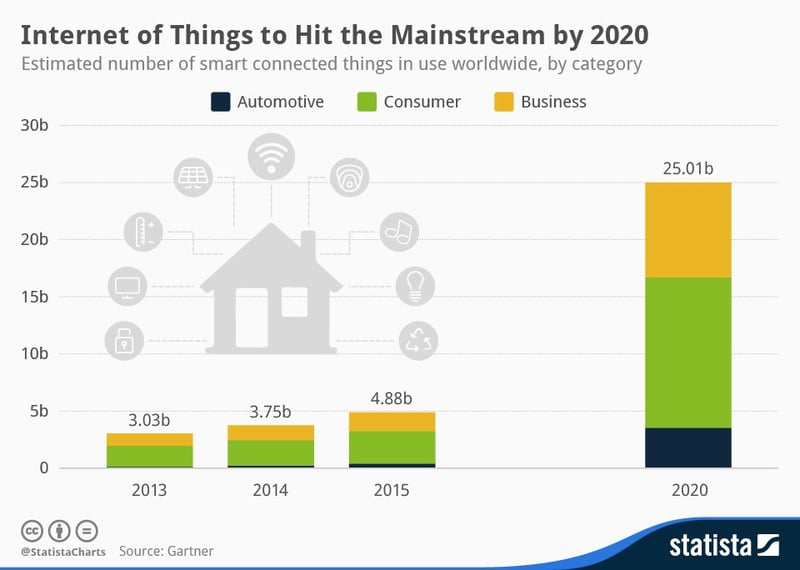In 2016, about 39 quadrillion British thermal units (or 40%) of total U.S. energy consumption was consumed by the residential and commercial sectors. Hence, there is a huge emphasis on energy savings in buildings. A report by the Rockefeller Foundation states “Upgrading and replacing energy-consuming equipment in buildings offers an important capital investment opportunity, with the potential for significant economic, climate, and employment impacts. In the United States alone, more than $279 billion
could be invested across the residential, commercial, and institutional market segments. This investment could yield more than $1 trillion of energy savings over 10 years, equivalent to savings of approximately 30 percent of the annual electricity spend in the United States.”
With that kind of staggering numbers, facility managers and building owners of commercial properties face an increased responsibility of implementing and using energy saving solutions. This has led to a demand of building management systems (BMS) as well as building automation and control systems (BACS).

The emergence of connected devices called Internet of Things (IoT) has provided the ability to monitor and manage the energy consumption of the building and has given the facility managers a means to meet their energy savings goals.
What is IoT?
Simply put, Internet of Things or IoT is the ability to connect anything with each other using an Internet connection. The “things” can be laptops, desktops, humans (if sensors are embedded in their clothing), physical devices, vehicles or even your home appliances. This is made possible with embedded sensors, actuators, electronics and software that enables the connection and exchange of information or data.
IDC research states says that there are around 13 billion connected devices in use worldwide already, and that that number could expand to 30 billion within the next three years.

IoT has enabled the “smart” technology, where the data from sensors can be used to automatically adapt to fit the environment it is working in. “Smart” building technology is becoming popular among tenants, landlords, property owners, facility managers, vendors and utility service providers. Some of the IoT solutions are cost effective, east-to-install and overcome huge capital barriers that limit traditional Building Management Systems (BMS).
They can handle use cases such as energy management, remote control, alerts, tenant sub-metering, or thermostat control. They’re affordable and functional enough to provide a high ROI for mid-market buildings.
Take the case of Tyréns, one of Sweden’s largest consulting companies that employs more than 1300 people. They implemented smart building technology creating smarter workplace with real-time insights in their Stockholm headquarters.
This solution consisted of a 3D model of all their rooms, furniture, lighting and HVAC equipment. They installed over a 1000 IoT sensors throughout the building and registered the location of these sensors. The sensors sent real-time information about everything ranging from temperature to humidity, light, power usage and occupant movement. This data was visualized in the 3D model so that the building facility managers knew what was going on in every part of the building 24 hours a day.
If you would like to join this digital revolution overtaking the building management systems, the following are the ways you can implement it in your building:
How can IoT be implemented in your building?
1.Foundation of IoT network:
The number one place to start implementing an IoT solution for your building is understanding your goals. Business goals like reducing energy consumption, decreasing energy costs, increasing sustainability and decreased carbon emissions can often lead to a successful business case and show a positive return on investment (ROI).
You would then engage a technology services vendor to layout the architecture of the system. Some of the main factors to keep in mind are:
- What kind of information do you want to monitor or control – this can be things like temperature, humidity etc. For example, if you live in cold climates where you experience sub-zero temperatures, it is important to consider tracking the humidity levels to prevent frozen pipes.
- It is also crucial that you implement a standards-based IP network. This type of network will help with delivering results with the best performance, reliability and interoperability that is required to support partner systems.
- The proliferation of connected sensors and equipment raise new security concerns. As more and more folks embrace IoT, you need to ensure that security procedures such as hardware encryption, physical building security and network security for data in transit are implemented. Identity and authentication structures will also need to be updated to support “things” as well as people.
2. Smart building Systems:
Smart building IoT systems can be used to optimize energy efficiency in a building in the following manner:
a. Monitoring: Data collected from various sensors placed in the systems and sub-systems within a building is analyzed and concrete recommendations made to minimize energy consumption considering the specific context of buildings. The other driving parameters are minimum energy consumption by devices that are always powered, devices that only consume power when they are operational and occupant’s behavior.
Typical data that is monitored include:
- Temperature and humidity
- Power usage
- Water Flow
- Air Flow
- Leak detection
- Pressure
- Lighting
The improved sensing and connectivity promised by the IoT could potentially make buildings more responsive to the needs of users. For example, information could be gathered about tenants’ activities and personal preferences — occupancy, location, activities — which could be used to customize indoor conditions to suit the occupants, and to reduce unnecessary energy use during unoccupied periods. Controlling systems like HVAC, lighting, operable windows, shades and plugged-in devices can be an added advantage.
b. Maintenance:
The biggest advantage of implementing a “smart” building solution is the connection that is established between energy management systems (EMS) and lighting, energy and mechanical systems. Facility managers can automate this system to operate remotely during any hour of the day. They can bring the systems up or power them down, detect occupancy levels, adjust temperature or humidity and dim or turn off lights.
The good news is that most of the data that is measurable can be maintained by setting threshold limits. Alerts and notifications via email, text or voice calls are triggered when the limit points are crossed. For example, if the upper limit for the temperature of a room is set to 76 degrees, an alarm would be sent to the facility manager when the temperature reaches 77 degrees. A task can also be automatically created in the maintenance software to request an air-handler that services the room.
This leads to the streamlining of the flow of events and offers several benefits:
- No manual data entry is required.
- Problems are addressed before the tenants can complain.
- The large cost of equipment failure is addressed since it would be serviced immediately.
- The building operator would not be spending time on diagnosing the issue.
c. Advanced Analytics:
As the data collected from the various devices in an IoT solution is enormous, this data can be analyzed for various results – e.g., historical reports of energy consumption down to the granular details. Data can also be used to build models for predictive analytics based on various factors. For example, you can determine the increase in energy consumption based on weather forecasts like heavy rain or a hurricane.
The data collected is both structured and unstructured. Structured data is information such as assets, location information, utility costs, financial data, measurement and control data like temperature, humidity etc. Unstructured data consists of inspection reports, operator logs, telematics, email etc.
These large sets of data typically reside in the cloud and enable access to the data quickly and effectively.
According to Brett Wheless, director of field services, Schneider Electric. “More than half of facility managers are still largely reactive when it comes to maintaining building systems, which can have major impacts on occupant comfort and can decrease the life of the building. We are now seeing a change in attitude among facility professionals that is driving them to think differently about the way they collect and assimilate building data.”
By aggregating the data, there is an heightened visibility into patterns and this can be used to make better business decisions.
Some of the key benefits of the advanced data analytics provided by IoT are:
- Identifying key factors driving your energy consumption and determining the likelihood of outcomes.
- Optimizing decision-making using measurable historical as well as real time data.
- Easier to plan, budget and schedule maintenance activities including repairs, replacements and spare parts inventory.
Conclusion:
In conclusion, Internet of Things or IoT is a game changer in the field of building and facility management. It consists of devices like sensors, actuators and systems connected to each other via the Internet. You can implement an IoT solution for your building management by laying down the foundation of this solution, using Smart Building solutions for monitoring and maintenance. IoT also offers the benefit of advanced analytics, wherein you can not only get reports of energy utilization but also benefit from the visualization of the patterns of data. As more and more building operators are taking advantage of IoT solutions, it becomes important for you to consider investing in this tremendous opportunity.
We have new case studies. Check them out to learn how other companies are implementing an IoT Smart Building Solution.



